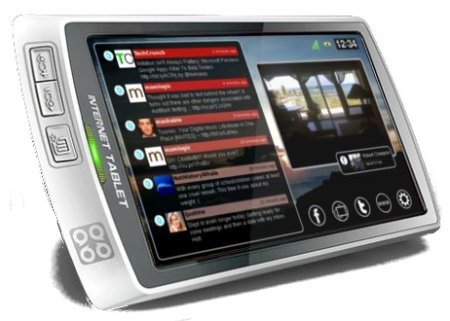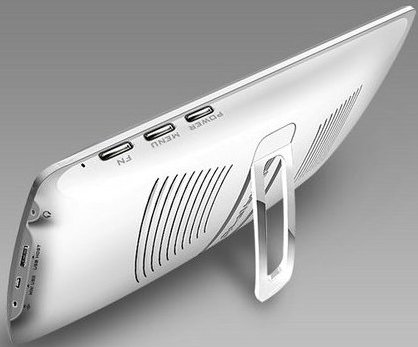ARM-based MID boasts voice-enabled Facebook
Oct 1, 2009 — by Eric Brown — from the LinuxDevices Archive — 4 viewsAdelaVoice is shipping a voice-enabled MID that's tuned to social networking sites. The Lighthouse SQ7 is based on SmartDevices' ARM11-based SmartQ7 design, offering a seven-inch, 800 x 480 touchscreen, 128MB of RAM, 1GB of flash, WiFi, and an Ubuntu Linux-based interface with voice-enabled Facebook and Twitter updates.
China-based SmartDevices started selling its SmartQ5 and SmartQ7 mobile Internet devices (MIDs) earlier this year. Instead of the MID-typical Intel Atom CPU, however, both devices are equipped with a Samsung S3C6410 system-on-chip (SoC). Incorporating an ARM1176 core, the SoC offers "advanced hardware blocks for multimedia processing," according to Samsung. The S3C6410 has been incorporated in a Samsung/Chumby reference design for digital picture frames (DPFs).

AdelaVoice Lighthouse SQ7
Like the SmartQ7, the Lighthouse SQ7 backs up the Samsung SoC with 128MB of DDR RAM and 1GB of flash. Presumably, the device maintains the SmartQ7's memory card slot, although AdelaVoice makes no mention of this. The seven-inch "Touch-lens" display offers 800 x 480 resolution, and is accompanied with a stylus that "conveniently stows away inside the unit," says the company.

Lighthouse SQ7, rear view
Voice-enabled social networking
AdelaVoice is run by Christopher and Gregory Hassett, who in 1997 co-founded the pioneering PointCast push-Internet service (perhaps a bit too pioneering for those early days of broadband). Not surprisingly, then, the term "always on" figures prominently in their marketing. The company has developed an Ubuntu Linux-based UI stack for the device that combines voice recognition and text to speech technology with social networking support.
The Lighthouse SQ7's Facebook (left) and Twitter interfaces
(Click on either to enlarge)


The Lighthouse SQ7 WebKit-based web browser (left) and photo slideshow
(Click on either to enlarge)
Availability
The AdelaVoice Lighthouse SQ7 is available now for $250. More information may be found here.
For some other intriguing Linux-ready MIDs, tablets, DPFs, and portable media players (PMPs) that have appeared this year, see the links below.
This article was originally published on LinuxDevices.com and has been donated to the open source community by QuinStreet Inc. Please visit LinuxToday.com for up-to-date news and articles about Linux and open source.

